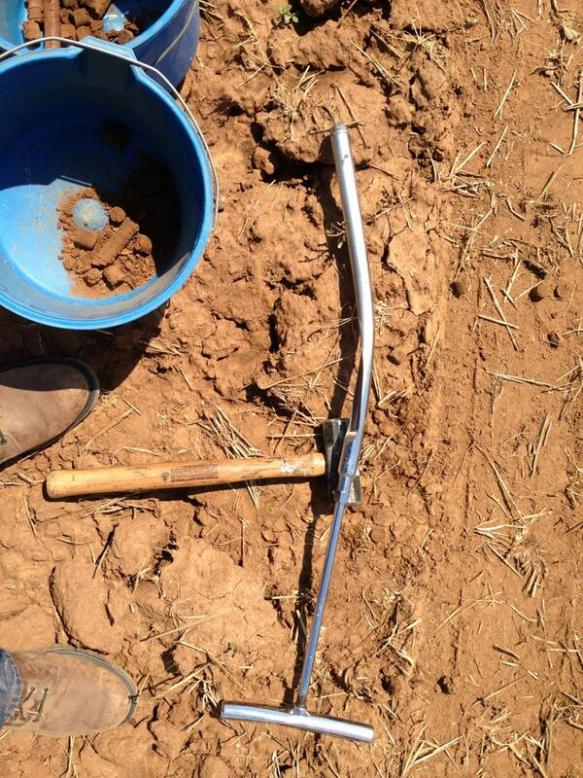Stories about seed law violations and fines have sprung up occasionally in the farm press over the past few years. These stories have tended to focus on the “penalty” part of the law and the magnitude of the fines rather than how the law protects Oklahoma farmers’ investments in wheat variety development and the provisions in the law that allow farmers to save seed for replanting. The purpose of this article is to answer some of the most frequently asked questions regarding the PVP law.
What is PVP?
The Plant Variety Protection Act (PVP or PVPA) is a federal seed law designed to protect the intellectual property of plant breeders, seed producers, and those who have funded variety development (in our case OSU and Oklahoma Taxpayers). The PVP law that you read about in the news today was enacted in 1994 and was an amendment to a law originally passed in 1970. The law prohibits the sale of farmer-saved seed without the variety owner’s permission. This protection lasts for 20 years for most crops. The ‘Title V’ you sometimes see tacked on to the end of PVP, refers to an amendment to the federal seed act stating that the variety can only be sold as a class of certified seed and by variety name.
Can I save seed from PVP-protected varieties?
Yes. You can save seed from PVP-protected varieties to plant on land you own or rent. You just cannot sell or trade the seed for planting purposes. A comparable example is an audio cd. You can make extra copies of an audio cd for your own use, such as an extra copy for the truck, without creating any problems. However, if you placed copies of the latest Sturgill Simpson cd for sale on Ebay, you would likely be contacted by the owners of the music regarding your unauthorized sale of their intellectual property.
Can I save seed of Clearfield varieties?
No, because Clearfield varieties are protected by a utility patent which protects a specific gene within the cultivar. Other examples of crop seed with genes protected by a utility patent include Roundup Ready, Bollgard, and Liberty Link. Wheat farmers will likely be seeing greater use of utility patents in the future but to my knowledge Clearfield varieties are the only hard wheat cultivars currently protected by a utility patent.
What about selling variety not stated (VNS) seed?
Not allowed. As indicated earlier, Title V of the federal seed act states that PVP-protected varieties can only be sold by variety name as a certified class of seed. This is one of several “ways-around-the-law” type questions that I am frequently asked at meetings and the answer is almost always no, you cannot do that. Other examples of violations would include: selling feed wheat, trading seed, giving seed away, and selling the standing crop of a PVP-protected variety and saving the seed.
The law just applies to the seller, right?
No. If there is a violation, then all parties involved can be included in the lawsuit. This includes the buyer, seller, seed conditioners, and even the entity spreading/planting the seed for the farmer.
How do I know if a variety is protected?
Certified seed of a protected variety will be clearly marked as such on the seed tag or the bulk label. The OSU Wheat Variety Comparison Chart indicates which varieties are PVP-protected and can be found at www.wheat.okstate.edu under Variety Testing, then under Variety Characteristics. Most varieties are now PVP-protected.
OSU is a public institution, why are they PVP-protecting varieties?
First and foremost, OSU acquires PVP-protection for new wheat cultivars to protect our (OSU, farmers, and taxpayers) collective investment in variety development. It takes 10 – 15 years to develop a wheat variety and this is not a cheap process. Without PVP protection others could reproduce an OSU wheat variety and profit from its sale without any benefit returned to farmers or OSU. PVP-protection ensures that when you buy an OSU variety, you are getting exactly the variety you are paying for and OSU has ensured quality-control standards through the certification process. It also ensures that a portion of the purchase price is returned to OSU for re-investment in the wheat breeding program where it is used to develop well-adapted varieties and ensure that the public sector remains competitive in wheat variety development.
Where can I find more information?
I am an agronomist, not a lawyer, so this article was meant to only hit the high points. A complete copy of the law (45 pages) can be found with a Google search of ‘plant variety protection act’. Texas AgriLife Extension also has a good summary of the law that can be found with a Google search for ‘plant variety protection act TAMU’.

